Sociolinguistic analysis of word choice, word frequency, and sentence length revealed differences between Republican and Democratic candidates.
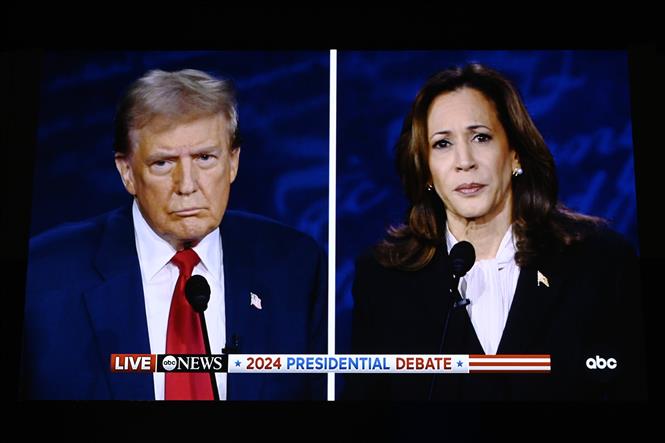
US Vice President Kamala Harris (right) and former President Donald Trump during the first live debate in Philadelphia, Pennsylvania, September 10, 2024. Photo: THX/TTXVN
During their campaigns, former President Donald Trump and Vice President Kamala Harris displayed different emotions and moods. The contrast between them was especially clear during the televised debate on September 10, 2024. One candidate appealed to the past, used more negative words, and stoked fear. The other candidate spoke more about the future, used more positive words, and appealed to voters’ feelings of hope. As a linguist, writer, and professor primarily teaching sociolinguistics, Patricia Friedrich, associate dean of Arizona State University, has always been fascinated by how people tend to use language in patterns. The recent debate between the Republicans and Democrats gave her an opportunity to examine how these candidates used language to win over voters. According to Professor Friedrich, looking at the approach a candidate takes can reveal deeper truths about them. Traditionally, through rhetoric and language, politicians have appealed to reason, emotion, or authority — or some combination thereof — to persuade their audiences. On the emotional side, both fear and hope are effective in motivating voters. There is no right or wrong way to do it. Linguists have developed the concept of idiolects, personal fingerprints that are different for each individual and are created by our unique linguistic and social experiences. People often prepare and rehearse for public speaking events. But when they actually face an audience, they tend to fall back on what has become their nature — their idiolects. For example, speakers don’t think about the length of their sentences. They think about the ideas they want to express. They may not realize that there are patterns in their speeches and delivery, or that they repeat the same words over and over again. Negativity in Language Professor Friedrich used an artificial intelligence (AI) tool to answer questions about word frequency, sentence length, and word type during the debate. She manually checked all of the AI tool's output to make sure there were no discrepancies. She predicted that the way the candidates used language during the debate would reflect their different approaches to the campaign, especially in terms of past or present orientation, appeals to fear or hope, and negative or positive statements. And they did. First, Professor Friedrich selected six segments of the debate transcript, each of similar length and each in which both candidates answered the same question or at least a similar one.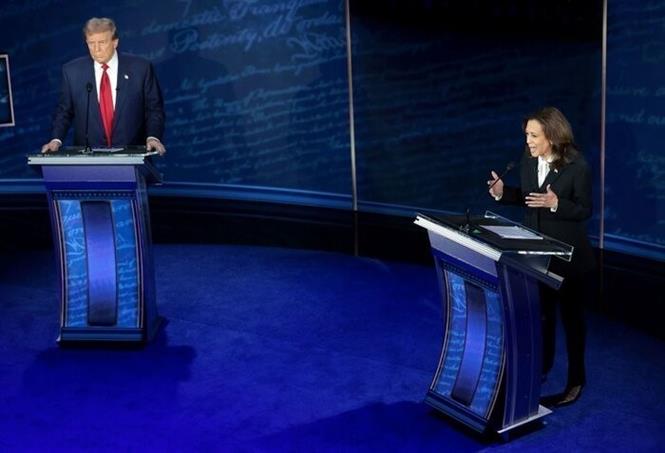
Ms. Kamala Harris (right) and Mr. Donald Trump (left) in the live debate on September 10, 2024. Photo: IRNA/TTXVN
She then looked at the negativity in their language, arguing that more negative statements would be more consistent with political appeals to fear, while more positive statements would be more closely related to appeals to hope. If a candidate appeals to fear, they are likely to focus on what could or could go wrong. Conversely, if they focus on hope, they are likely to focus on what could go well in the future. The results showed that Trump consistently made more negative statements than Harris. That was true for each of the six segments, with a difference of between 33% and 166%. For example, in the 30-second segment, Trump used negative statements and words like “totally destroyed” and “disastrous” 12 times. In her 30-second response, Harris used negative statements or words only 7 times. The tone of the terms also varied: Mr. Trump’s negative words tended to be stronger, such as “violent,” “terrible,” and “absurd.” Overall, across all segments analyzed, Mr. Trump made about 61% more negative statements than his opponents. Short sentences vs. Long sentences Professor Patricia Friedrich then looked at sentence length, inferring that shorter sentences may tend to convey a sense of urgency, more in line with fear, and longer sentences may be more fluid and calm, and thus more associated with hope. Intuitively, people might think that shorter statements reflect directness and address the issue head-on, but that’s not necessarily the case. For example, one of Mr. Trump's relatively short statements, "The agreement said you had to do this, this, this, this, this, and they didn't do it," could be considered a dodge because it doesn't contain specific information that would allow the listener to judge for themselves whether something was done. However, it is simple and short, only long because of the repetition of the word "this." For the first segment analyzed, the average sentence length for Mr. Trump was 13 words, while for Ms. Harris it was 17 words. The gap widened in the second, where the average sentence length for the former president was 14 words, while for the vice president it was 25 words. That “pattern” was the same in the third. Talking about the past or the future Finally, Professor Friedrich looked at how the two people talked about the future and the past, and whether they talked about one or the other more, as possible indicators of a greater focus on fear or hope. Typically, in a context of fear, the recent past is used as a time to escape, while the more distant past is a time to return. In contrast, those who focused on hope were looking toward the future. When analyzing their closing remarks, Friedrich found that both candidates made the same number of references to the past, but in very different ways. Most of Harris’s references to the past were related to the fact that Trump had focused on it. Trump, meanwhile, talked more about what he considered failures by his past opponents. He also talked about his past accomplishments, such as, “I have completely rebuilt our military.” As for future statements, all four of Trump’s statements were warnings about what he thought would happen if his opponent won—for example, “If she wins, shale gas fracking in Pennsylvania will end on Day 1.” Harris made nine “future” statements, all of which were about what she planned to do. For example, she said, “And when I become president, we will do it for everyone, understanding that the value I bring to this is that health care should be a right, not just a privilege for those who can afford it.” Also in her closing statement, Vice President Harris summed up the debate: “Tonight, you heard two very different visions for our country. One focused on the future and one focused on the past. And one tried to take us back to the past. But we’re not going back.” The election results will tell whether American voters are more drawn to fear or hope at this point. And the next few weeks will certainly provide a wealth of data for linguistic analysis.
Source: https://baotintuc.vn/the-gioi/ket-qua-thu-vi-khi-ai-phan-tich-trang-thai-tinh-than-cua-ong-trump-va-ba-harris-20240924224429363.htm


![[Photo] Top players gather at the 2025 Nhan Dan Newspaper National Table Tennis Championship](https://vphoto.vietnam.vn/thumb/1200x675/vietnam/resource/IMAGE/2025/5/23/9ad5f6f4faf146b08335e5c446edb107)







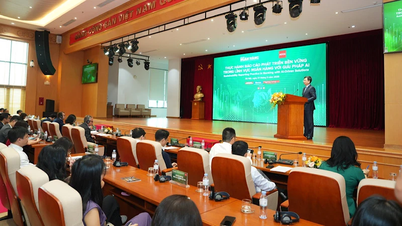























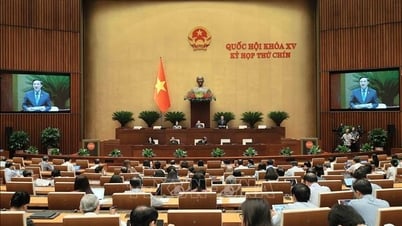











































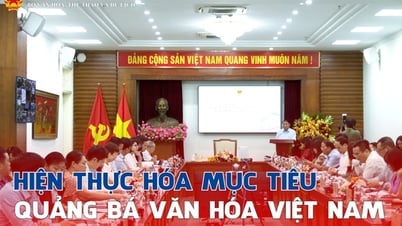




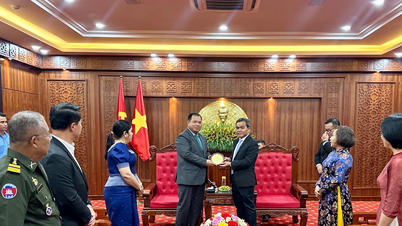
















Comment (0)